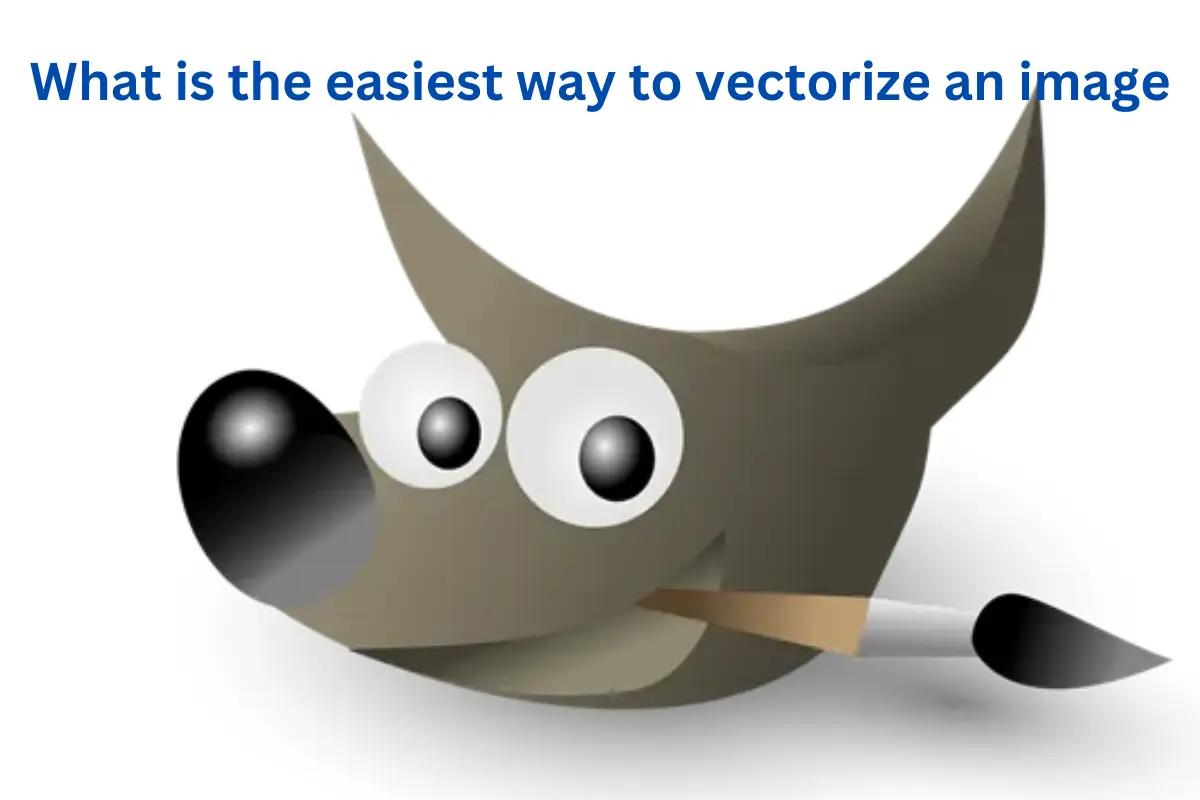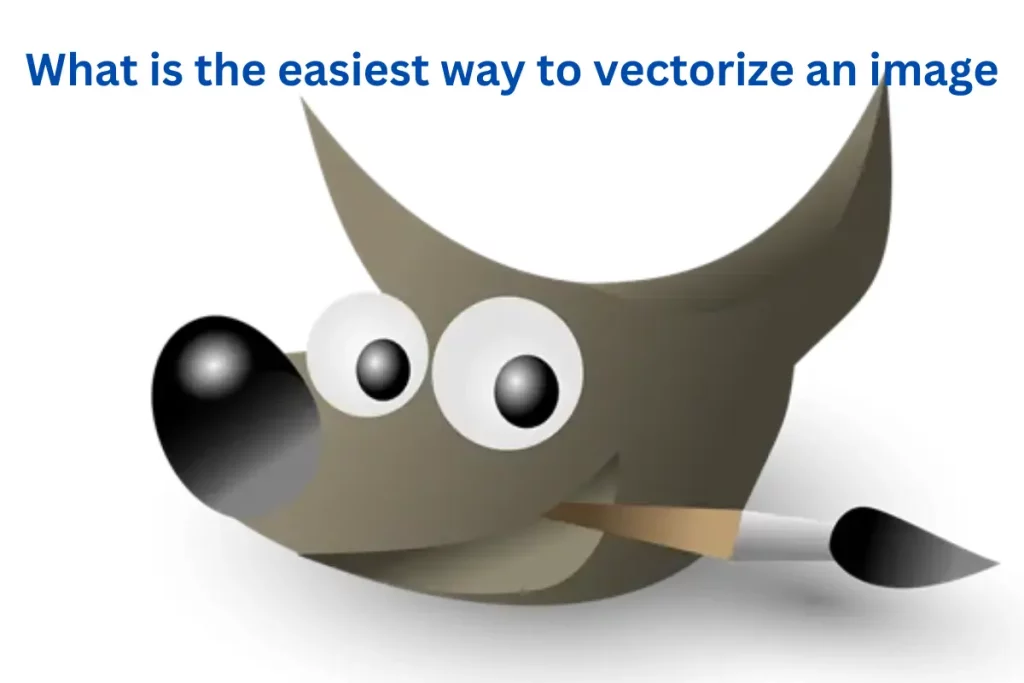Converting images to vectors is a skill that every designer should be familiar with. The good news is that there are numerous tools and tutorials available online that will teach you everything you need to know. Designers and advertisers should be familiar with vector images, which are a popular file type. After all, this is the standard format for billboards and other types of advertisements. There are numerous methods for converting flat images to vectors. In this article, we will explore some approaches among them. So let’s see what is the easiest way to vectorize an image.
What Is a Vector?
Vector images are formed using a mathematical formula. A mathematical formula sounds insane, right?
Vector images are infinitely scalable and resizable because of this mathematical formula. As a result, vectors are the ideal file type to use when creating a graphic or image that will need to be resized frequently.
If you’re a busy person, then you shouldn’t re-design your graphic every time you need more branded material. Consider vectors when designing a logo for a flyer, banner, business card, or that cool company coffee mug you’re giving away as an incentive gift. All of these promotional materials feature the same graphic but in varying sizes. That is the power of vectors.
What is the simplest method for vectorizing an image?
It may sound like vectorizing an image is a quite difficult process. In reality, it has an easy step-by-step approach which will be discussed in the following points-
Step 1: Select an image to vectorize
While performing the following process, the image that will be utilized is irrelevant. However, larger images will take longer to edit. Some images perform better as vector images than others.
It is preferable to edit a single subject rather than a landscape or something similar. The image should preferably have a white or transparent background and be of low resolution. It must be in a format such as JPG, GIF, or PNG. Vector image formats are commonly used for things like logos and icons.
Step 2: Opt for an Image Trace Preset
Illustrator has a tool that allows you to vectorize images. It’s called Image Trace, and it comes with a set of presets that do the majority of the work for you. In general, use the Image Trace preset that best matches the type of image you’re converting, as each one produces different results. Such as-
- High-Fidelity Photo and Low-Fidelity Photo options matter in this case. These generate very detailed vector images and slightly less detailed vector images, respectively. They’re ideal for photos or complex artwork, like the example image.
- 3 colors, 6 colors, and 16 colors are available. These preset generate vector images in three, six, or sixteen colors. They’re ideal for logos or artwork that contains a lot of flat colors.
- Greys in various shades are also a great preset option. This setting creates a detailed grayscale image.
- The logo in black and white option produces a simple two-color logo in black and white.
- Silhouettes, Line Art, and Technical Drawing are all examples of sketched art. These work best for specific types of images, producing black-and-white, primarily line-based drawings.
Step 3: Fine-tune your Image
Three, six, and sixteen colors are available. These settings generate vector images with three, six, or sixteen colors. They’re ideal for logos or artwork that features a lot of flat colors.
Grey hues preset generates a high-quality grayscale image. The logo is in black and white which results in a simple black-and-white logo. Sketched Art, Silhouettes, Line Art, and Technical Drawing are all examples of technical drawing. These are best suited for certain types of images and produce black-and-white, primarily line-based drawings.
Step 4: Colors should be separated
The next step is to choose your image. It will appear as a collection of various vector shapes in a variety of colors. These shapes will first be grouped. To make individual changes to these shapes, you must first ungroup them. This allows you to move and change each shape independently.
You can change the color, add or remove anchor points, and even apply a gradient to the shape. If the shape isn’t quite right, you can change it with your pen tool.
Step 5: Make Changes to Your Vector Image
After converting a raster image to a vector image, you can freely edit the image.
Begin by deleting any color groups you want. By clicking on a shape and going to Select > Same > Fill Color, you can select entire color groups. This will select all groups that have the same color as the one you chose with your Direct Selection tool (A).
Then, on your keyboard, press Backspace to delete the shapes. If you want to change or expand a specific color group, you can do so by selecting a layer with the Direct Selection tool. Fill in blank spots or add more colors to your design once you’ve picked a layer with the Pen or Brush tools.
Step 6: Download Your Image
Then you will find the original image after removing the background and slightly modifying it with the method described above.
Now comes the final step in converting an image to a vector in Illustrator: saving the image in vector format to preserve its quality. There are several vector image formats to choose from, including PDF, AI, EPS, SVG, and others. We’ll use the SVG format, which is widely supported across all design programs and on the web.
When you’re finished, go to File > Export > Export As. In the following window, name your file and select SVG from the Save as Type dropdown menu.
That’s all. You should now have a scalable vector file on your computer. You can resize it to your liking and export it in other formats to use in other apps or projects. Keep the vector image as your “master copy” at all times.
Conclusion
Vector and raster graphics are two types of images that are often difficult to distinguish from the naked eye. Vector images are geometrical computer graphics that are based on an x and y axis and can be scaled up and down for use in print, web, or graphic design content. Raster graphics, also known as bitmaps, are created on a grid of pixels and aren’t as sharp when scaled up. Vectorizing an image or photograph involves tracing the image and creating a vector, scalable version. If you want to explore more relevant articles, you are always encouraged to look at our other articles.
Read More Articles





